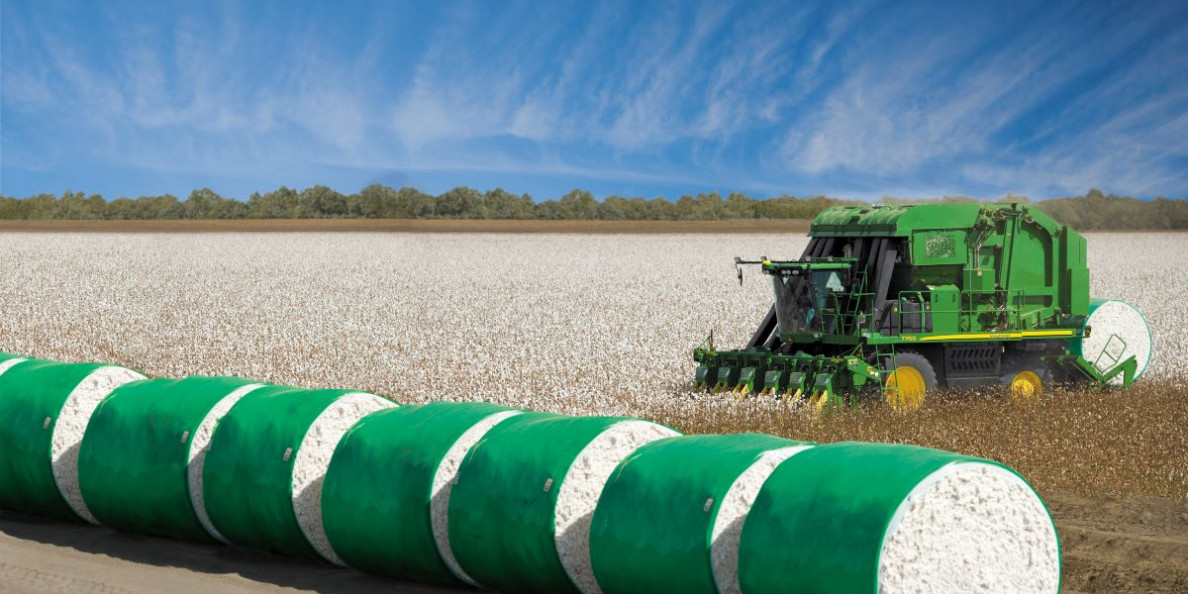The week ending Friday, July 25 saw ICE cotton futures gyrate lower-higher-lower in the 68 cent range (see chart above courtesy of Barchart.com). Dec’25 ICE cotton settled Friday at 68.23 cents per pound, while Dec’26 settled at 69.74 cents. Chinese cotton prices were flat/mixed this week, while the A-Index was flat-to-lower.
Across the week ending July 25, different commodity futures followed different paths. CBOT corn futures took a gentle glide into a long, flat landing. CBOT soybeans gyrated sideways before sliding lower, and KC wheat futures stuck to a more widely gyrated sideways path. ICE WTI crude oil futures descended-then-ascended in a wide V-shaped pattern. The U.S. dollar index appeared to descend and then rebound in a touch-and-go pattern. Dollar strength on Friday was attributed to White House reassurances about Federal Reserve policy independence. Other macro influences (i.e., GDP, inflation, and interest rate policy) remained mixed in their expectation and implication for slow economic growth.

Cotton-focused market influences this week saw continued weekly reports of very light to moderate regional demand for U.S. cotton. There were continued weak old crop U.S. export net sales for the week ending July 17, although this is more of a function of reported light supplies. However, weekly net sales for the next marketing year were also modest at 132,600 bales of upland, which has clearer implications for so-so demand. The pace of 2024/25 export shipments continued above the weekly average level needed to reach USDA’s target level of exports (11.5 million bales).
All of the projected U.S. old crop production has been ginned and classed since about April. New crop influences included clearer skies over most of Texas, but widespread rains over New Mexico, the plains states, the Gulf states, and the Southeast. The precocious Indian monsoon has brought above average rains that are likely increasing plantings of summer sewn crops, including cotton.
For the week ending Thursday, July 24, the day-to-day shifts in ICE cotton open interest slightly declined at first before modestly rising. But the pattern of futures settlements this week was flat, and therefore the implications are unclear for speculative positioning. The regular weekly (Tuesday, July 22) snapshot of speculative open interest showed a aggregate short positioning with 1,790 extra hedge fund short positions versus only 643 new hedge fund longs, week over week. This was reinforced by a 800 contract shrinkage in the index trader net long position, week over week.
The dynamics of ICE cotton futures may also represent a wet blanket on the market. It remains true that unfixed call sales (by mills) are at an historically low level, perhaps reflecting the cautionary buying on the demand side. In terms of ratios, unfixed call purchases (by suppliers) outweigh unfixed call sales by two-fold across all contracts, as of July 18.
For more details and data on Old Crop and New Crop fundamentals, plus other near term influences, follow these links (or the drop-down menus above) to those sub-pages.


